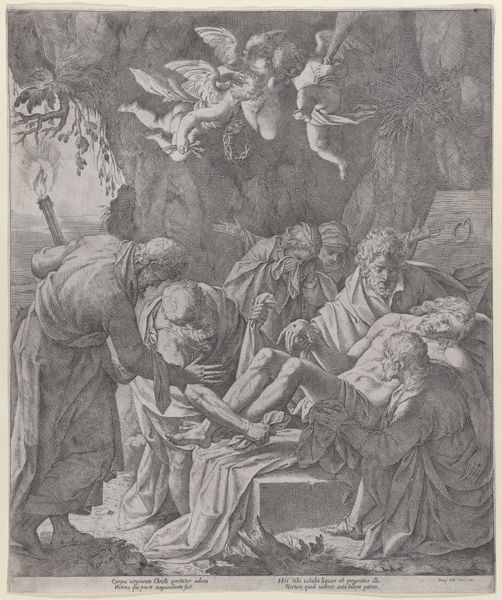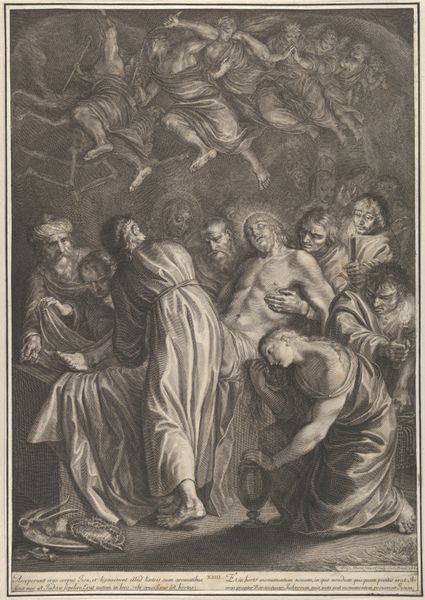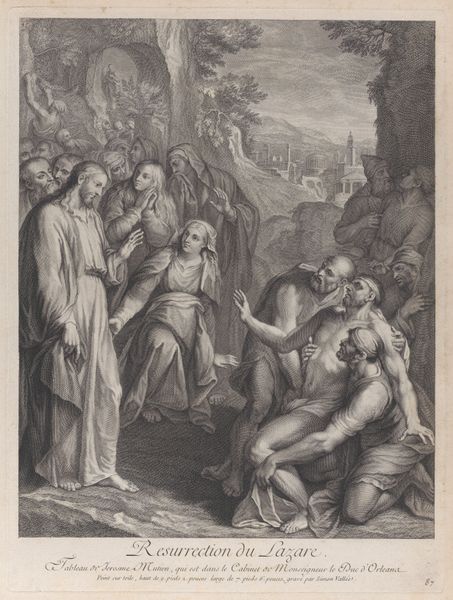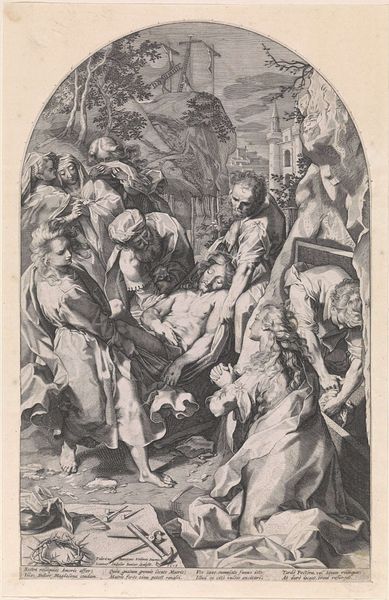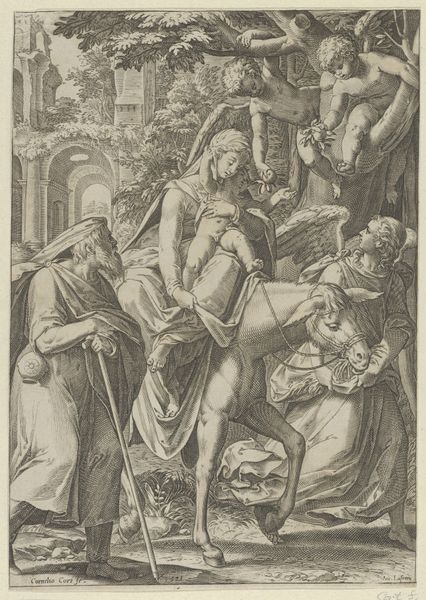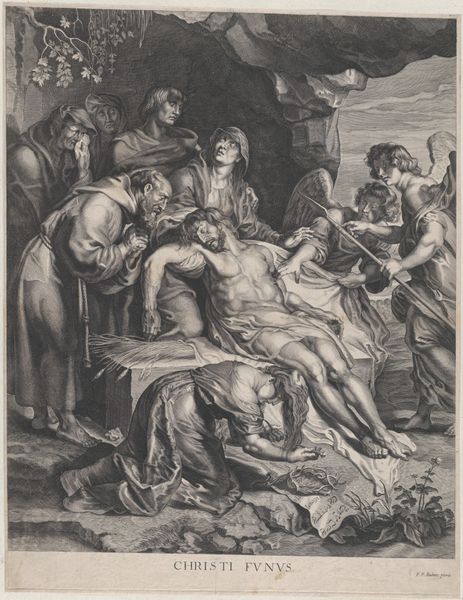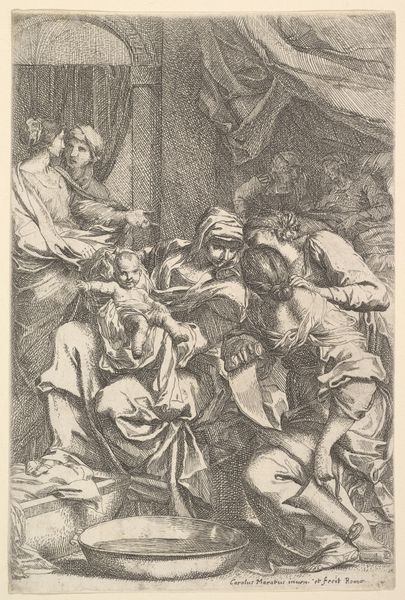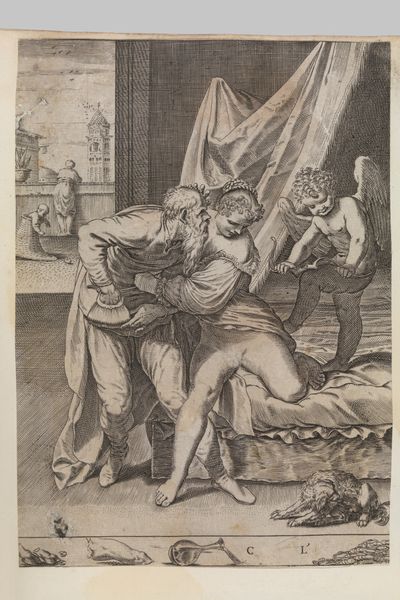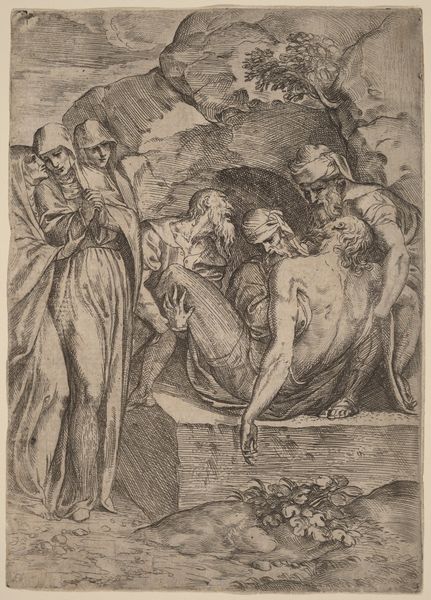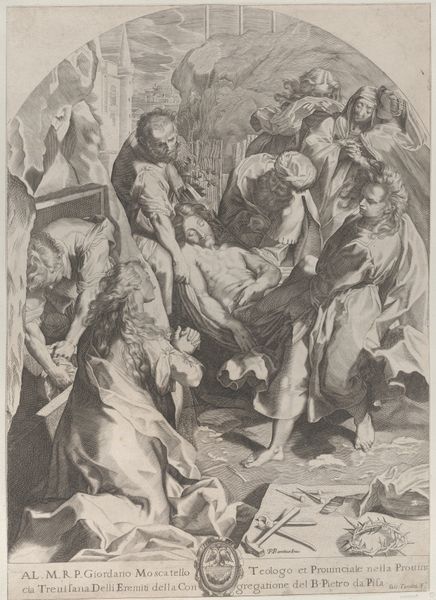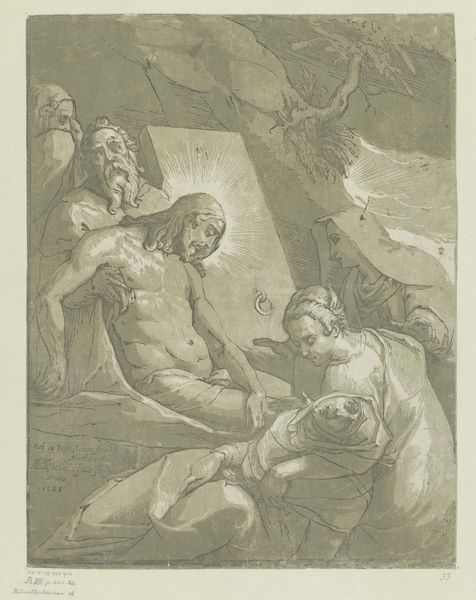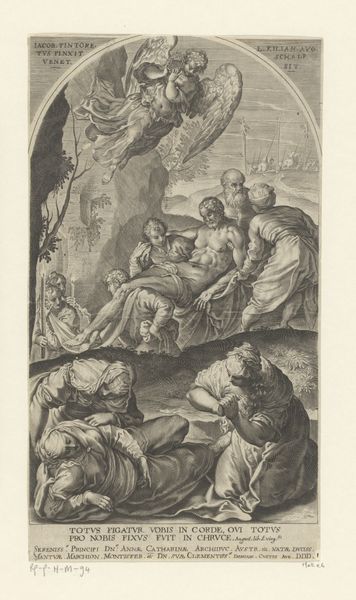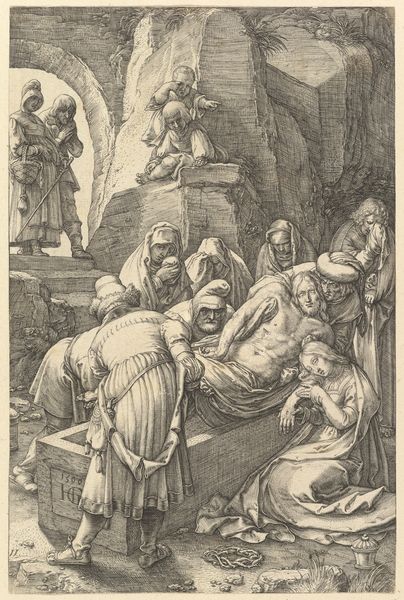
drawing, print, engraving
#
drawing
#
ink drawing
# print
#
mannerism
#
history-painting
#
engraving
Dimensions: Sheet (Trimmed): 20 3/4 × 15 1/4 in. (52.7 × 38.8 cm)
Copyright: Public Domain
Editor: Here we have Philippe Thomassin's "The Entombment," an engraving from 1589. It's striking how the figures are arranged—almost crammed—into the picture plane, contributing to a sense of emotional intensity. What are your observations? Curator: The density you mention is key. Observe how Thomassin uses line, not for naturalism, but to build dynamic tensions. The linear hatching creates visual rhythms that guide the eye, a very sophisticated design that rejects classical harmony. Editor: I notice the dramatic poses. Are these common for the period? Curator: Precisely. Mannerism revels in artificiality and rejects the Renaissance emphasis on natural proportion. Note how the figures are elongated, almost serpentine. Their gestures, rather than conveying genuine emotion, are stylized expressions, part of a visual vocabulary. Also consider how the composition places the crosses of crucifixion on a faraway plane behind the figures as to minimize the historical narrative to heighten a psychological experience. Editor: So it's about visual impact more than narrative accuracy? Curator: Yes, the essence lies in how the elements—line, form, composition—create an expressive whole. Can you identify where the engraving creates a focal point? How does the lighting support that choice? Editor: Perhaps where Mary Magdalene is kneeling with her clasped hands pointing up to the pale, recumbent body? The faces seem illuminated around the fallen Christ. Curator: Indeed. The artist is deliberately structuring the visual experience, independent of narrative, making use of the Mannerist stylistic vocabulary. The print asks us to interpret artistic intention over faithful representation. Editor: I never thought to consider this type of piece that way. Seeing beyond the story really reveals the visual complexities. Curator: It invites close scrutiny and thoughtful questioning and illustrates the break that Mannerism makes with previous classical and Renaissance styles.
Comments
No comments
Be the first to comment and join the conversation on the ultimate creative platform.
